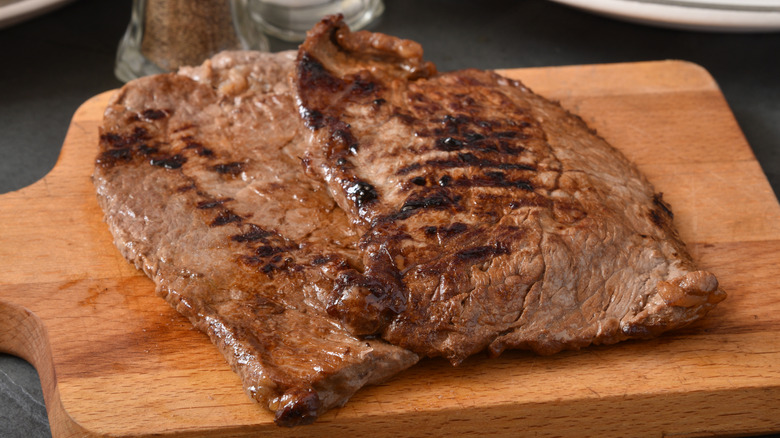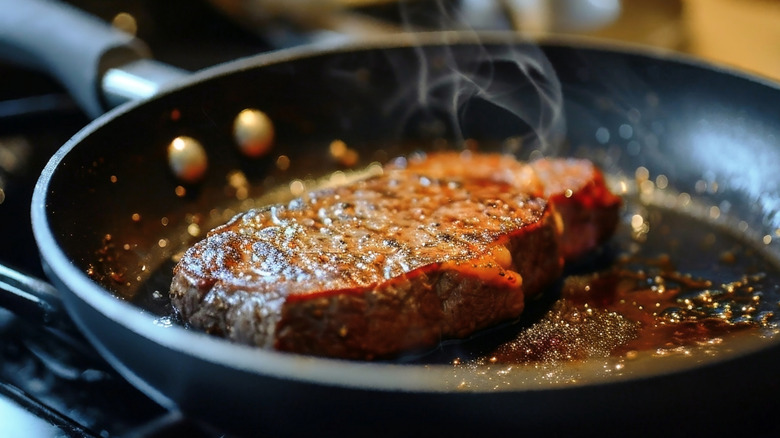How To Cook A Thin Cut Of Steak Without Completely Drying It Out
Properly cooking a steak is a skill every home cook should develop, but this task isn't always as straightforward as you may think. This is particularly true when dealing with thinner cuts of meat that present some taste and texture benefits but also some notable cooking challenges. To help you make the most of your thin steaks, we sought out expert Matt Kreider, executive chef at Steak 954 in Fort Lauderdale, Florida.
His most important tip is selecting an appropriate cooking method. "Quick, high-heat methods work best," says Kreider. These include options like pan-searing or deep-frying on the stove, broiling in the oven, or grilling. By combining high heat with a short cooking time, the steaks have time to adequately cook and develop exterior flavor while remaining tender and juicy.
Conversely, there are some methods you want to avoid at all costs when dealing with thin steaks. "Braising, crock pots, or even roasting can be a bad idea for really thin cuts of meat." Kreider explains. These all take significant amounts of time and put the steak at risk of drying out and toughening up. When animal tissue heats to too high a temperature for too long, it undergoes physical changes that drive out the moisture in the meat. This can be a particular concern with thin cuts, as the interior doesn't have the same insulation provided by thicker cuts.
Give your meat a rest
Avoiding a dried-out piece of steak also requires making smart decisions once you remove your meat from the stove, oven, or grill. Just like any other steak, it's super important to let thin meat rest for several minutes. As Matt Kreider says, "People tend to not rest thin cuts for some reason. If it's a protein, it should always rest. Even if it's only for a minute or two." Resting meat allows the muscle fibers to relax and reabsorb the flavorful juices that will otherwise run out onto the cutting board if you slice your steak immediately.
Although you might turn to marinades or other liquid seasonings to try to preserve thin steaks' juiciness, these typically provide limited help. Steak marinades (including unique options you should try like soy sauce and mustard) mostly work on the meat's surface, providing flavor rather than acting on the interior to alter juiciness or tenderness. If you opt for marinating a thin steak, Kreider says to keep it brief and not too acidic: "Too much acid will really break down a thin product and give you a mealy texture."
It's not hard to keep even thinner steaks nice and juicy. Just choose the appropriate cooking method and let the steak rest after cooking — a simple, two-part strategy that gives you more time to focus on the best sides to pair with your steak.

